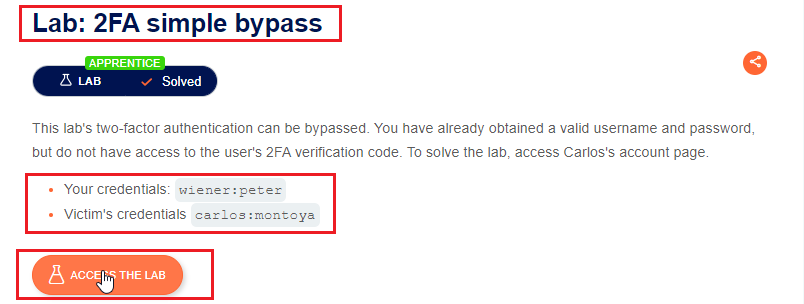In this blog, we will see how the attacker bypass the Two-Factor authentication. We will see, what is Two-Factor Authentication, why we need it, How two-factor authentication works, how the attacker exploit or bypass it and the mitigation of it. So, let’s get start with the blog.
Table of Contents
What is Two-Factor Authentication?
Two-Factor Authentication (2FA) is a security process that requires two separate forms of verification to
access an account or system, enhancing security beyond just a password. It typically combines something
you know (like a password) with something you have (such as a smartphone or security token) or something
you are (like a fingerprint). When logging in, after entering your password, you’ll be prompted for a second
factor, such as a code sent to your phone, generated by an app, or a biometric scan. This additional layer
of protection helps safeguard your account from unauthorized access, even if your password is
compromised. 2FA significantly reduces the risk of cyber attacks, such as phishing or brute-force attacks,
making it a crucial practice for securing personal, financial, and professional information.
Why Two-Factor Authentication is used?
Using Two-Factor Authentication (2FA) in an application provides several significant advantages:
A) Increased Security:
2FA requires users to provide two types of authentication factors—something they know (like a password)
and something they have (like a phone or a hardware token). This makes it significantly harder for
unauthorized individuals to gain access, even if they have obtained the user’s password.
B) Mitigates Password Theft Risks:
If a password is compromised through phishing, data breaches, or other means, the additional factor (such
as a one-time code sent to a phone) is still needed to access the account. This adds a crucial layer of
defense.
C) Protects Against Credential Stuffing:
Credential stuffing attacks involve using stolen username-password pairs to gain unauthorized access to
accounts. With 2FA, these attacks are less effective because the attacker needs the second factor to
succeed.
D) Reduces Impact of Password Reuse:
Users often reuse passwords across multiple sites, which can lead to widespread vulnerabilities if a
password is leaked. 2FA helps limit the damage since access requires the second authentication factor,
even if the password is compromised.
E) Strengthens Security for Sensitive Accounts:
For accounts with sensitive information or high-value transactions (e.g., banking, corporate systems), 2FA
provides a crucial security enhancement, ensuring that only authorized users can access critical functions.
How the Two-Factor Authentication works?
How Attacker Bypass it
Let’s see, how the attacker bypass the Two-Factor Authentication by solving one of the vulnerable lab.

So, from the above image we can see that they have provided attacker credential and also the victim’s credential.
Two-Factor Authentication Bypass Lab.
Task of the lab:
Access the Carlos’s account page via Two-Factor Authentication bypass
Step 1: Click on the “Access the Lab” Button, Go through the application. Click on the “My Account” button and you will get the Login Page.
Step 4: Remove the query string, “?id=wiener” and refresh the page to check whether the page validating based on the user.
Step 5: As, we can see that after remove the query string still it is giving the profile page of “wiener”, Now copy the URL and save it. It means that it is not validating based on the Query String. Copy the URL in the address bar. That is “”.
Step 6: Now, log out from the wiener account. Click on the “Log out” Button.
Step 7: Now, login with the victim’s credential i.e. username is “carlos” and password is “montoya”.
Step 8: Now, paste that URL and click the “Enter” button, you will see the carlos profile page.
Conclusion:
So, here the
